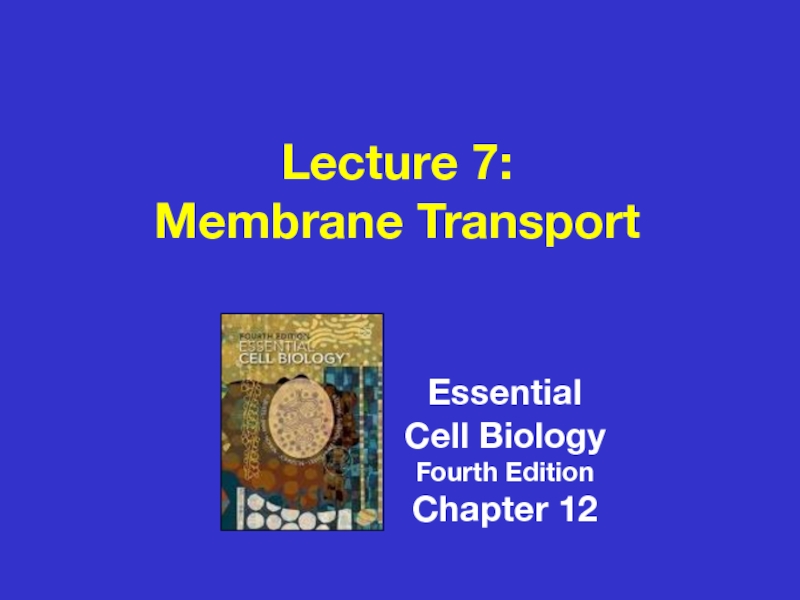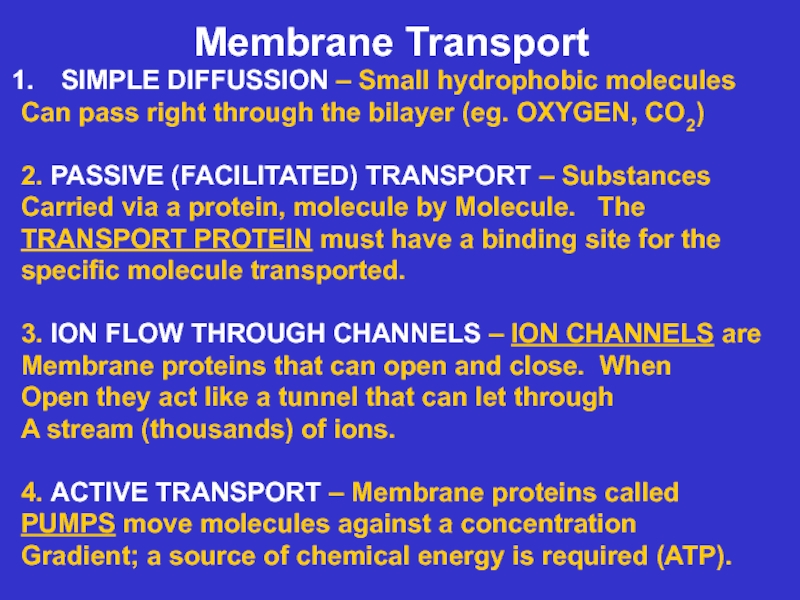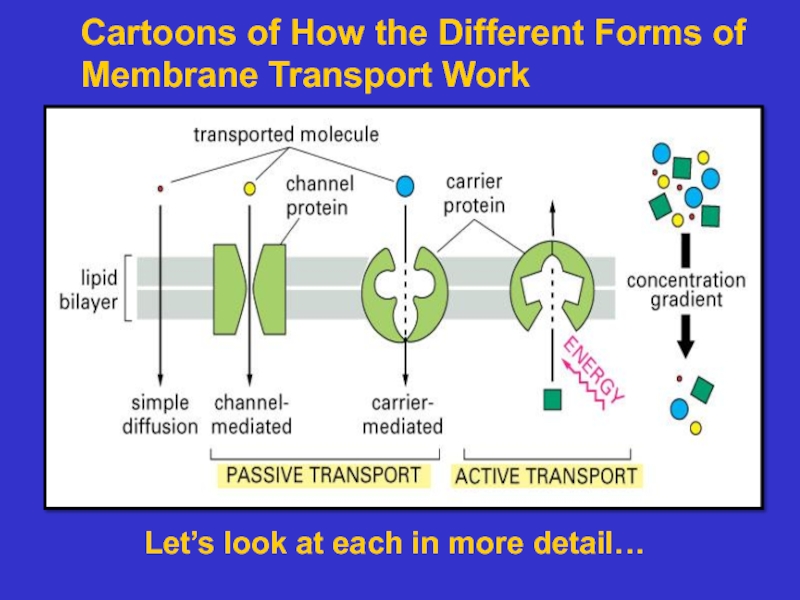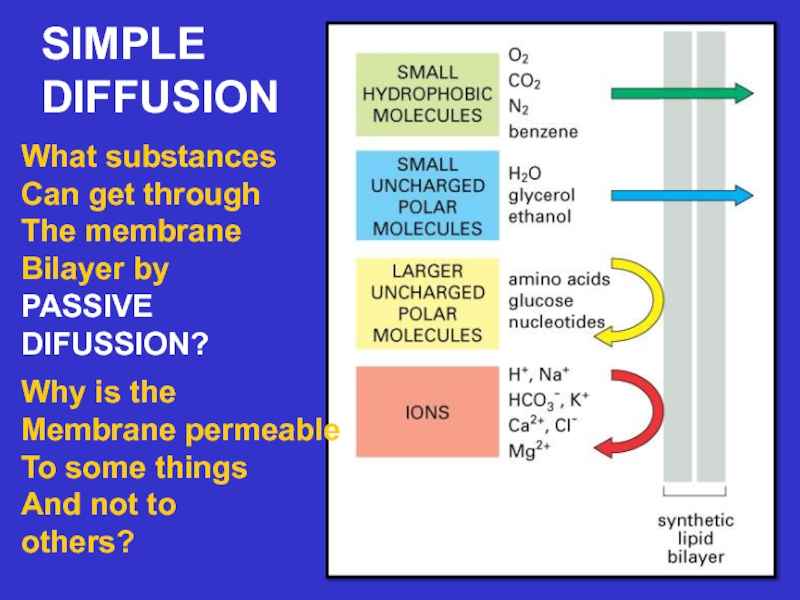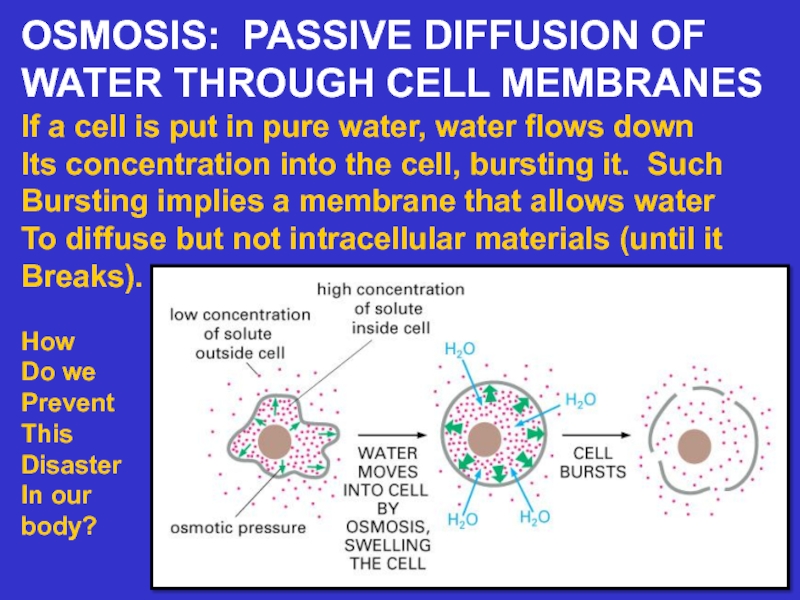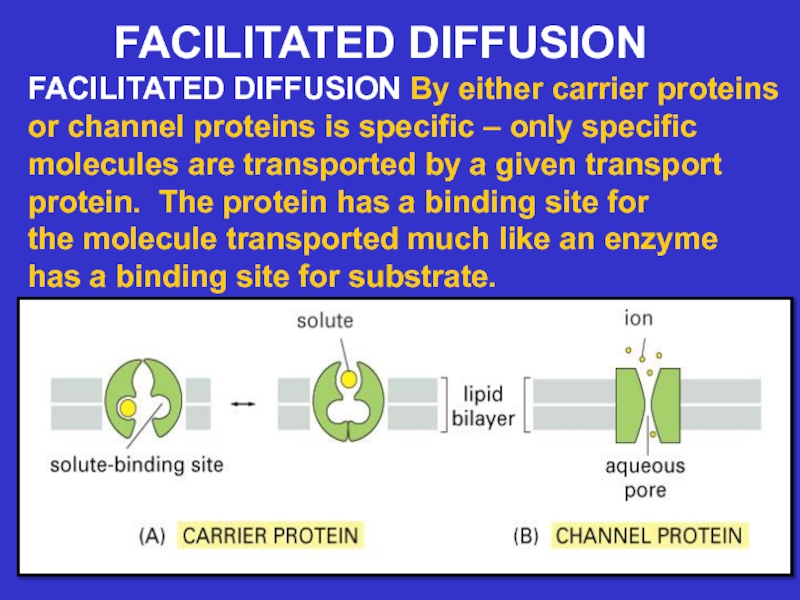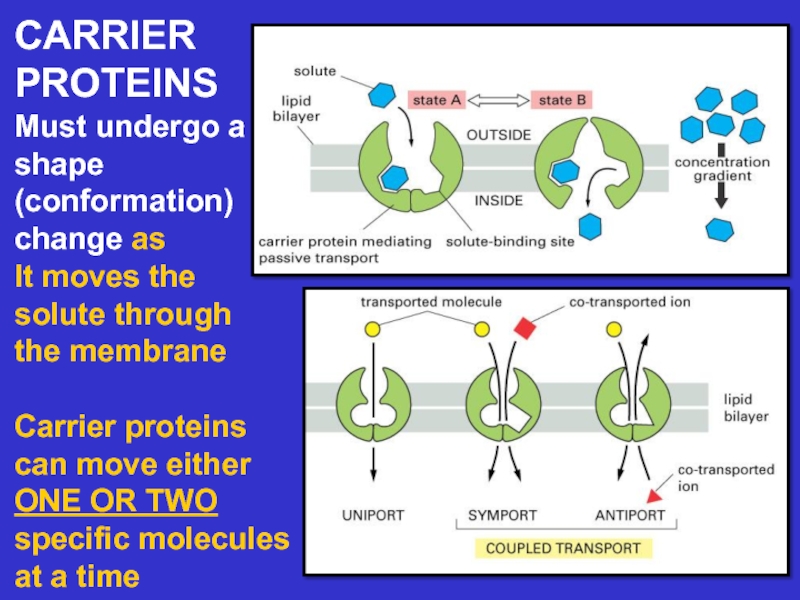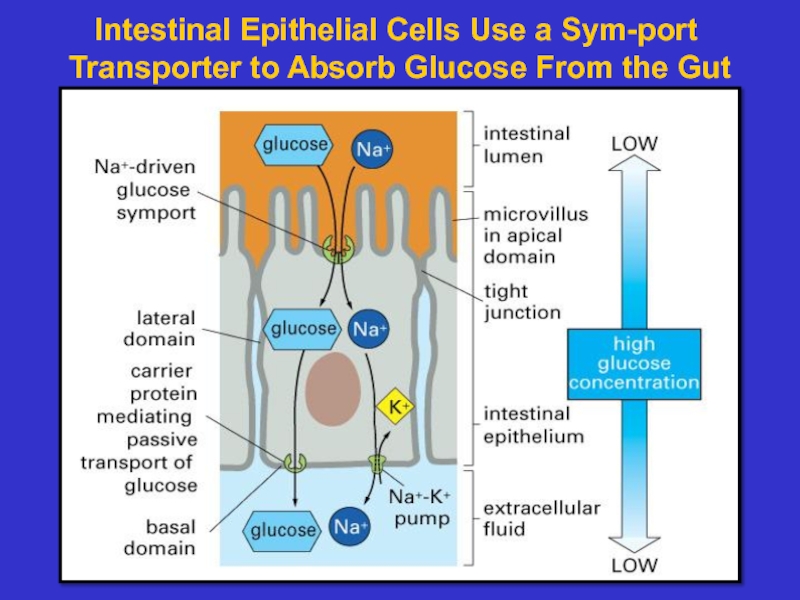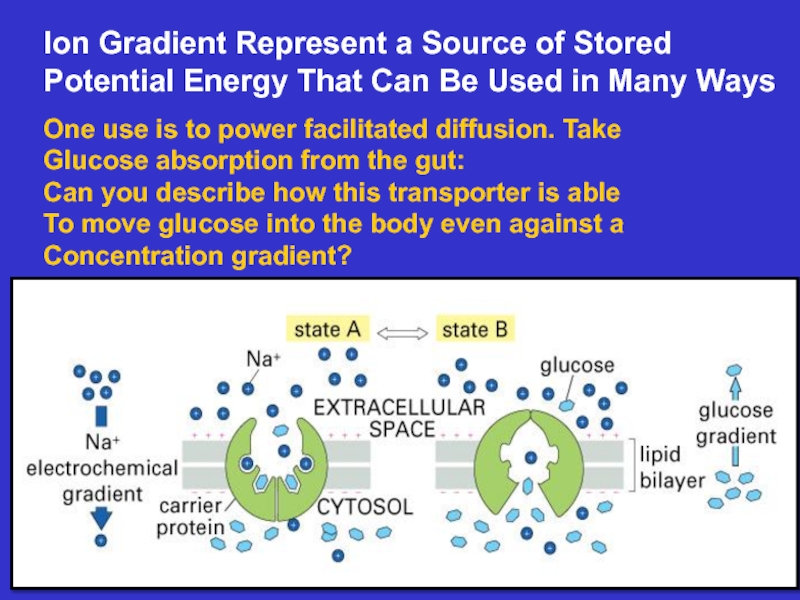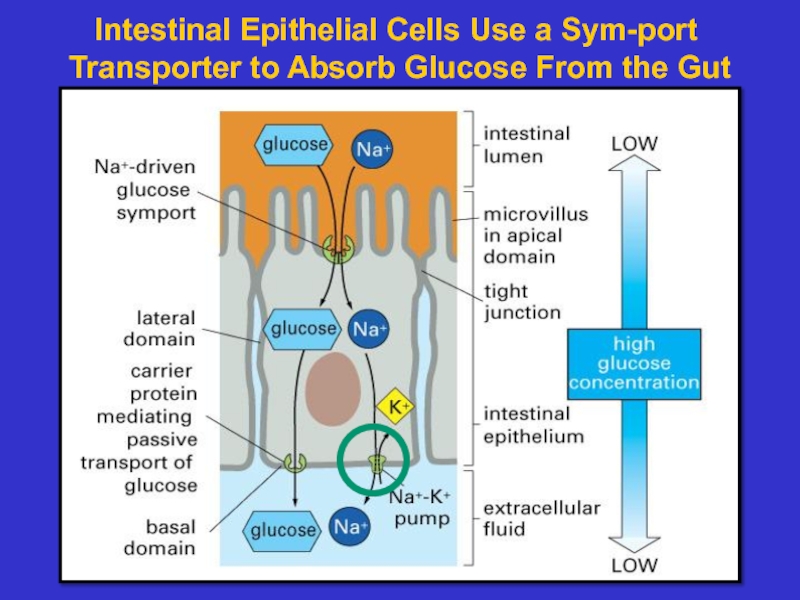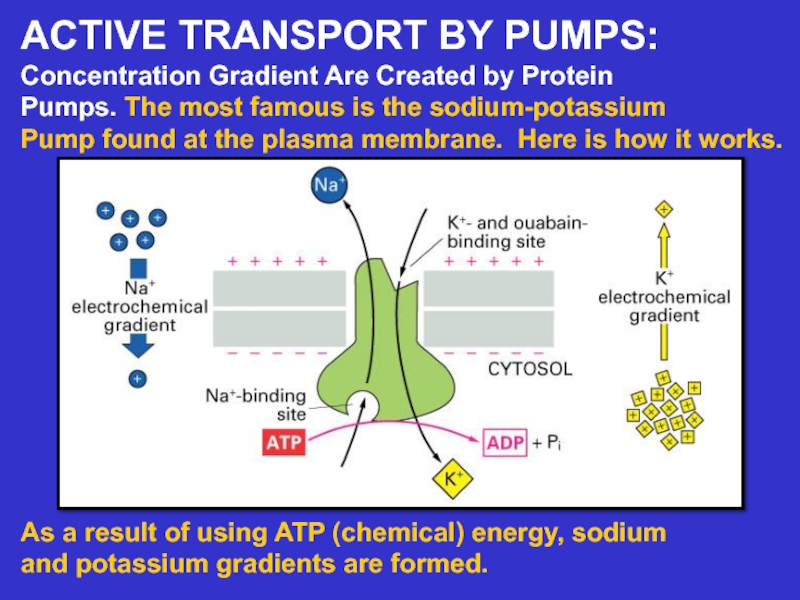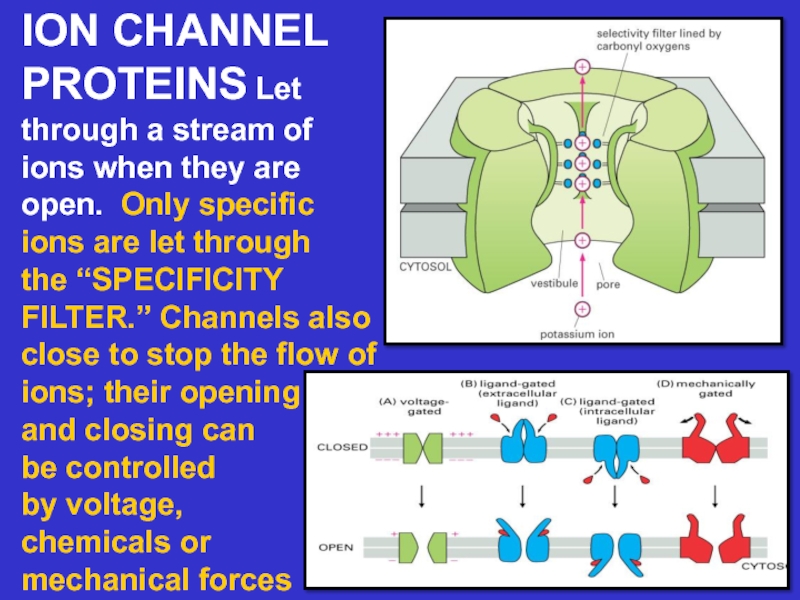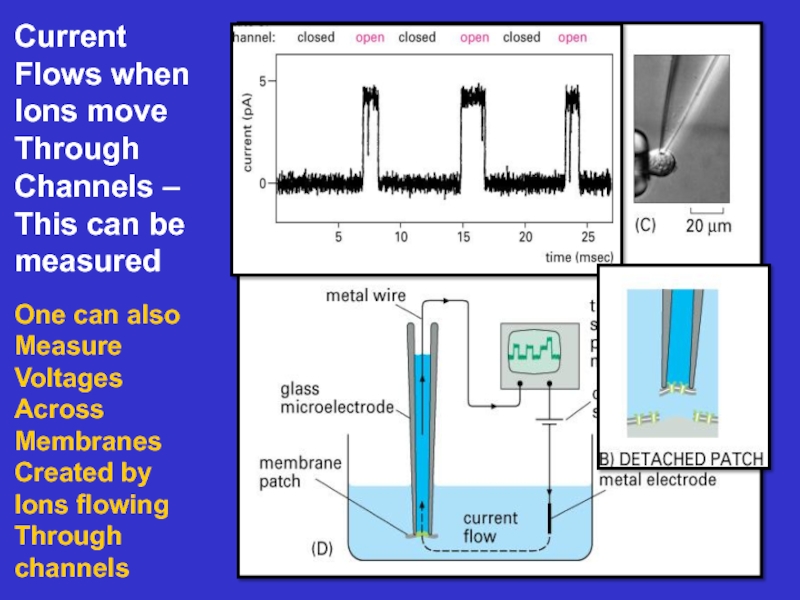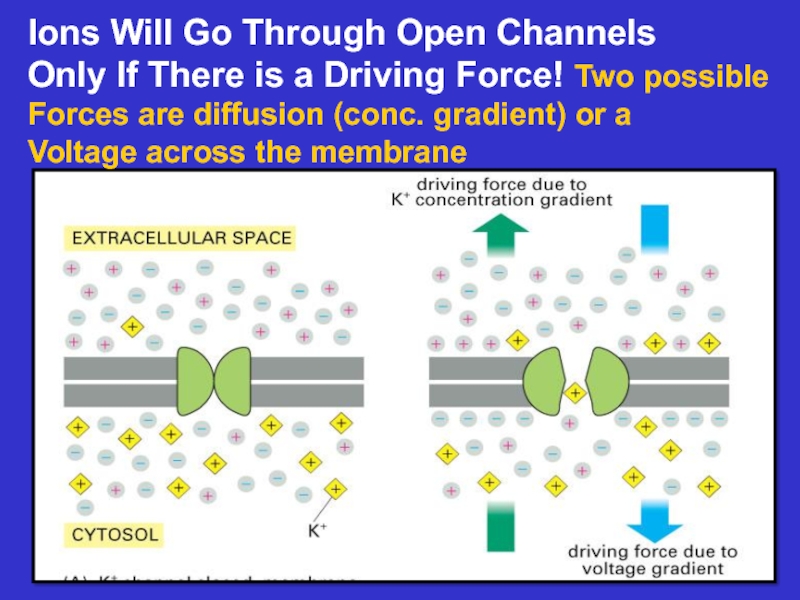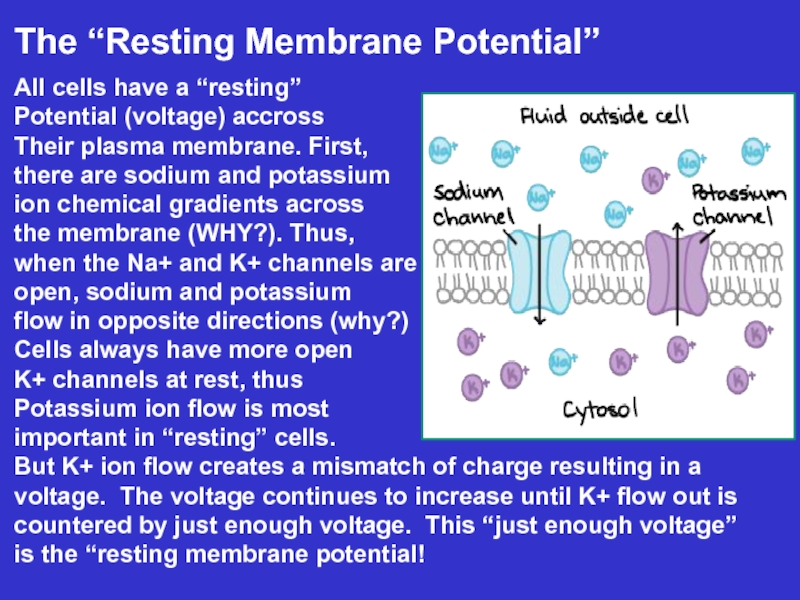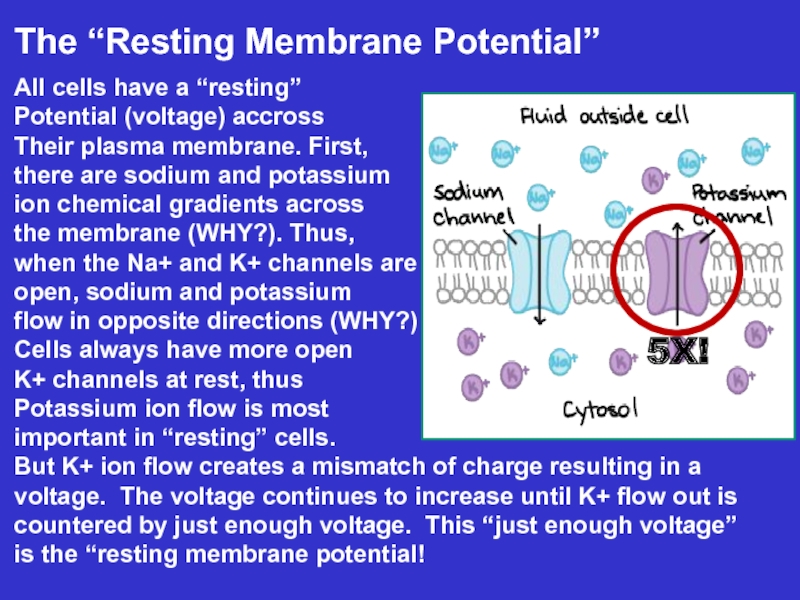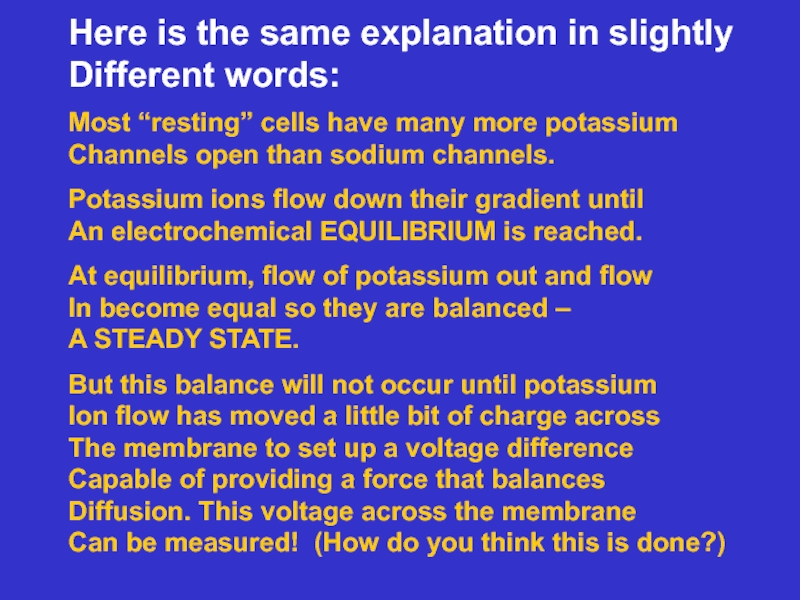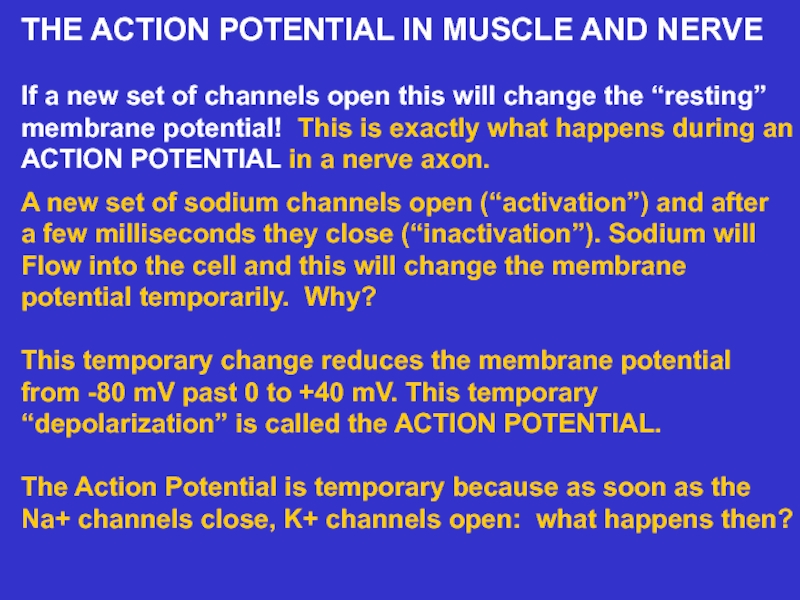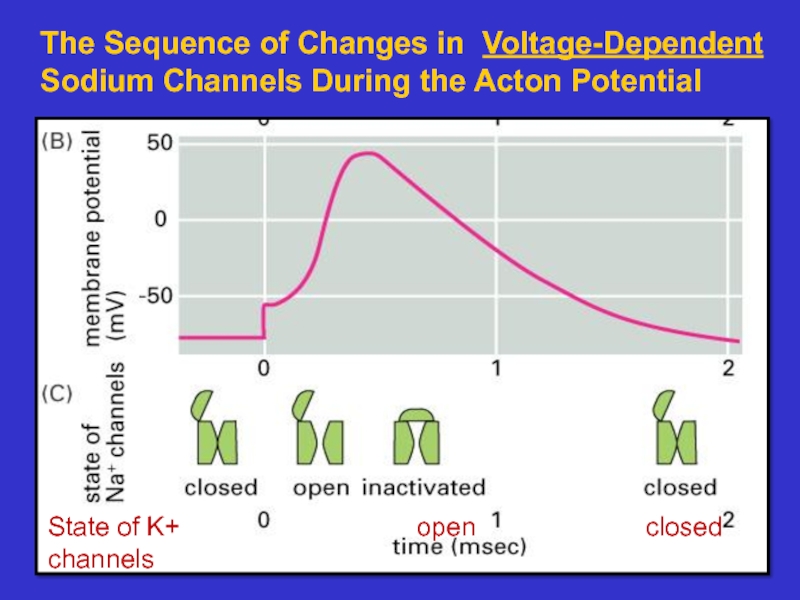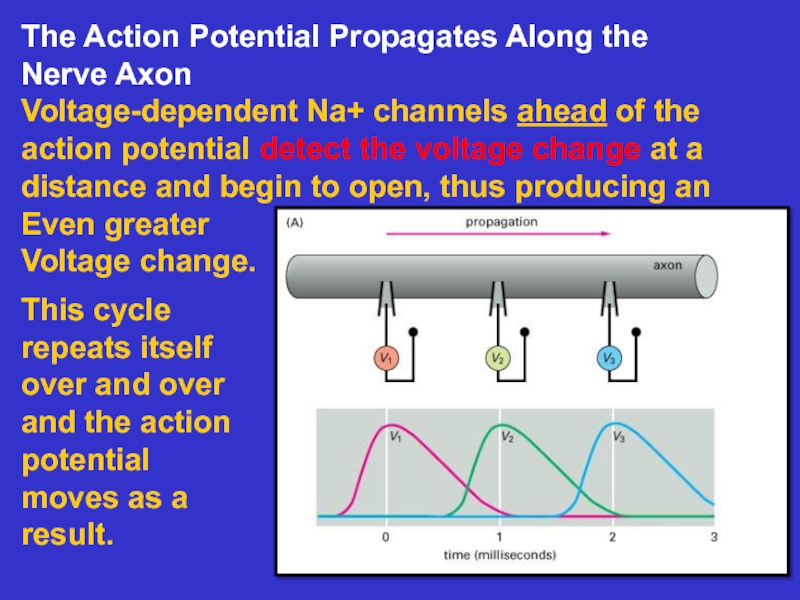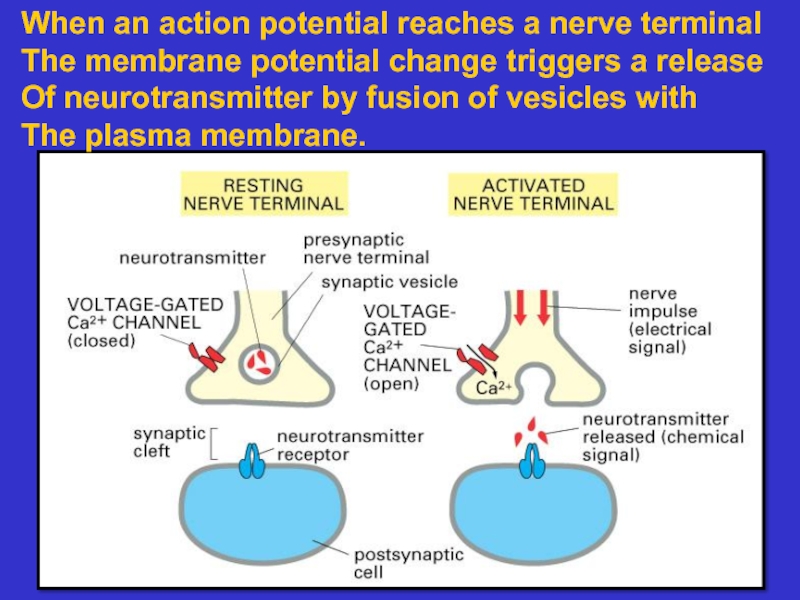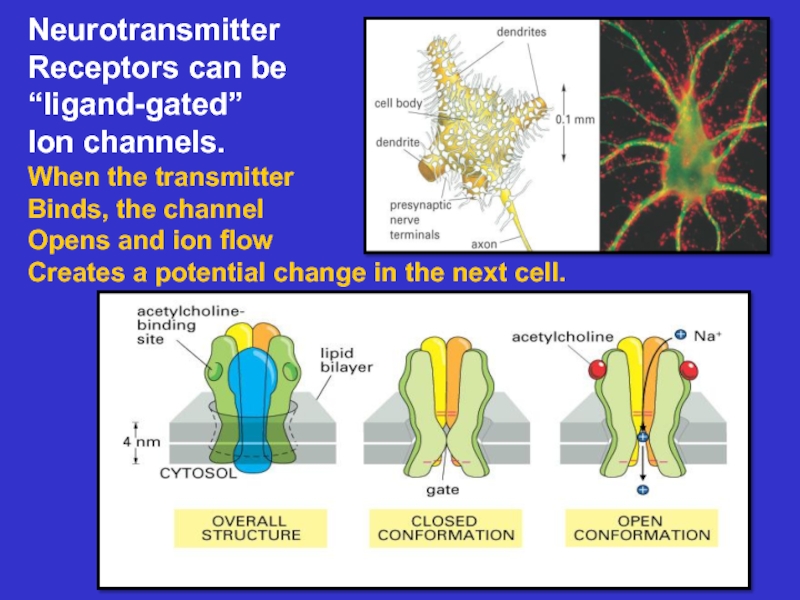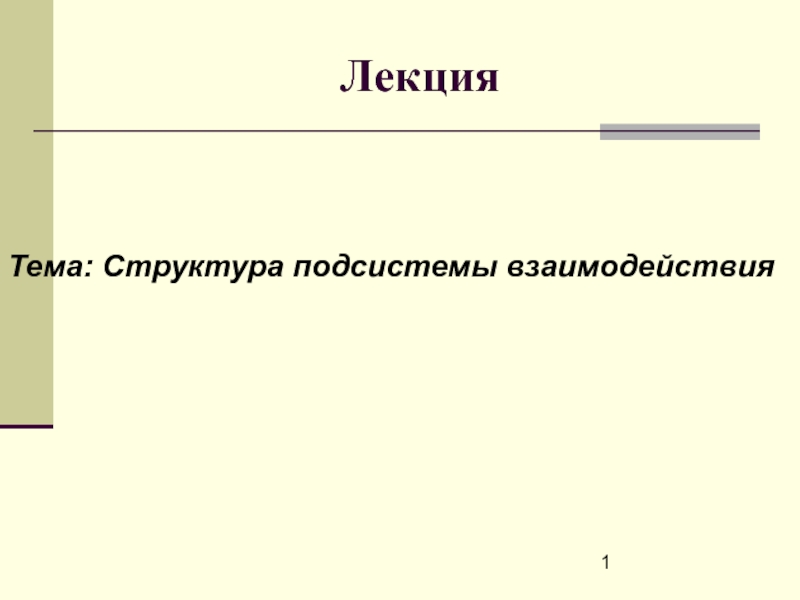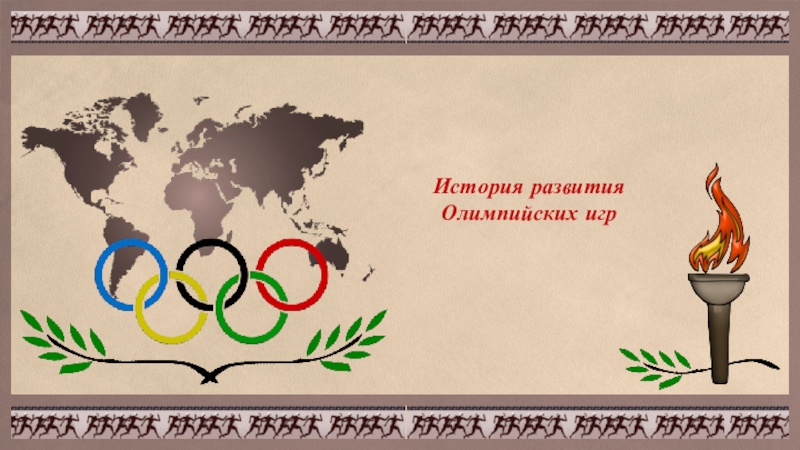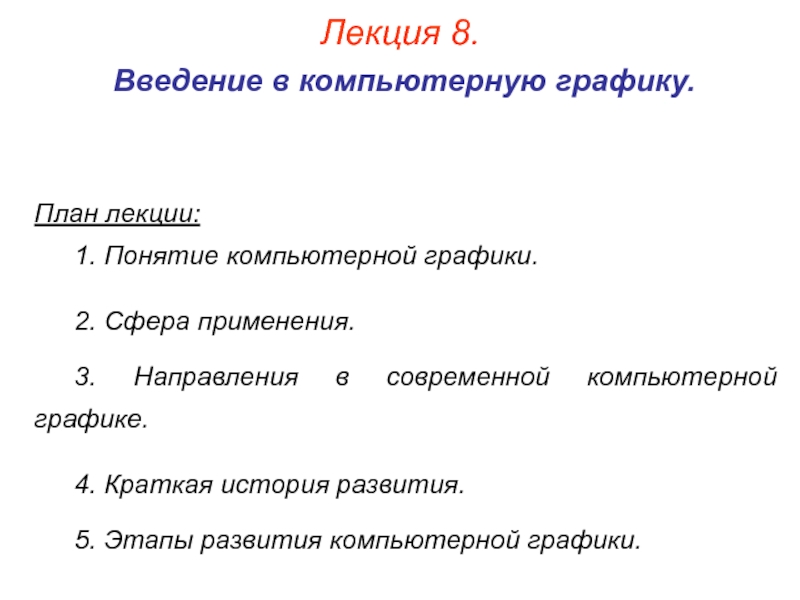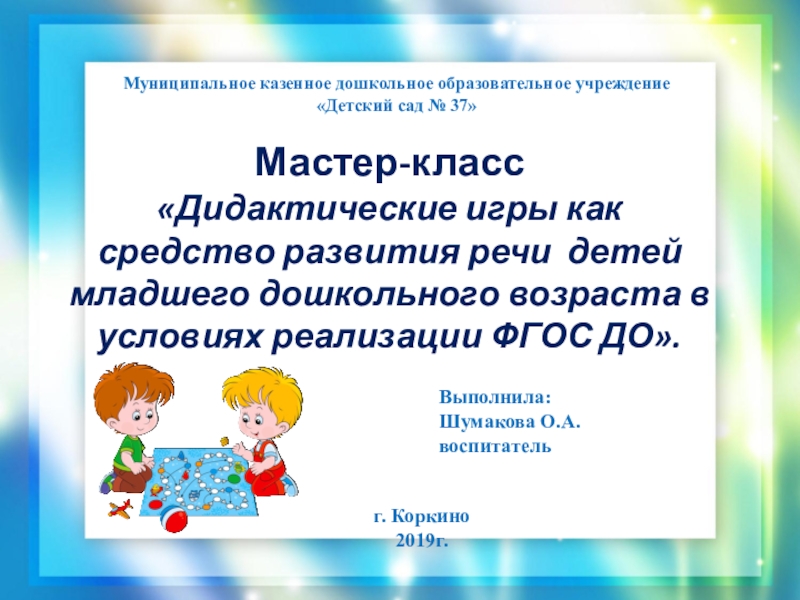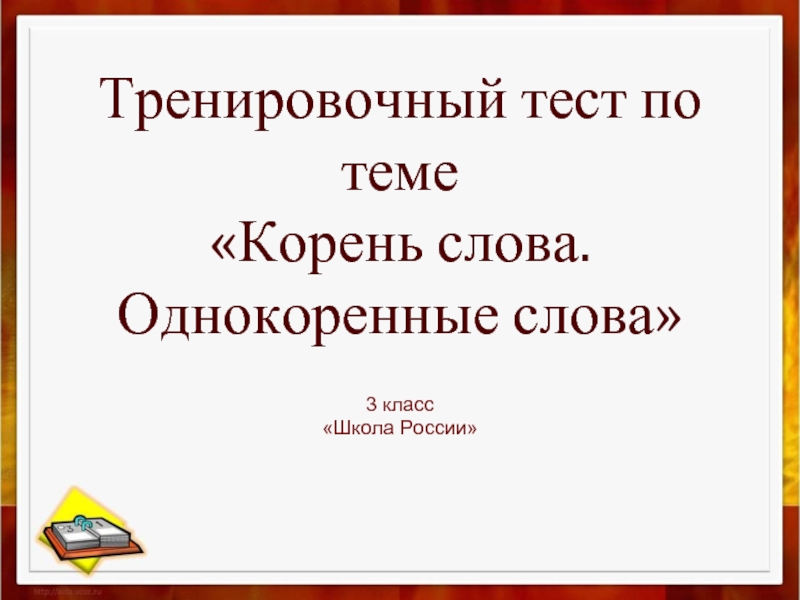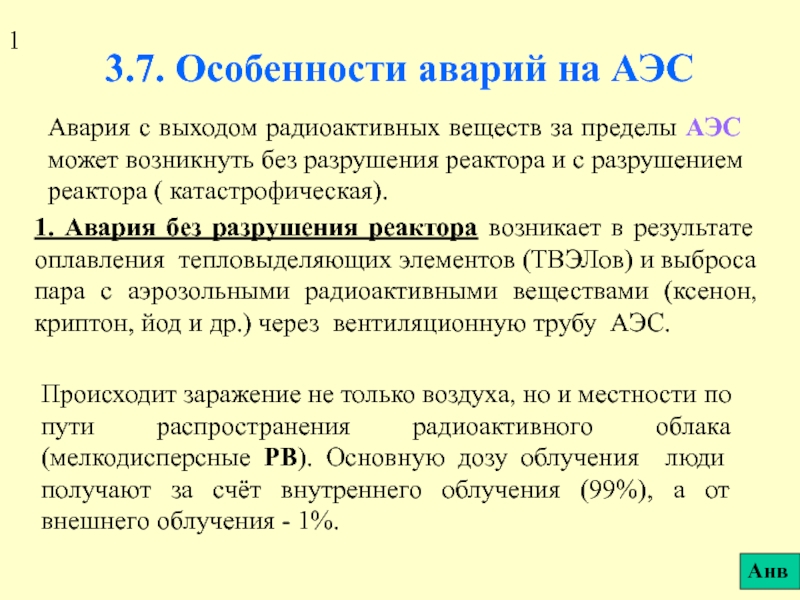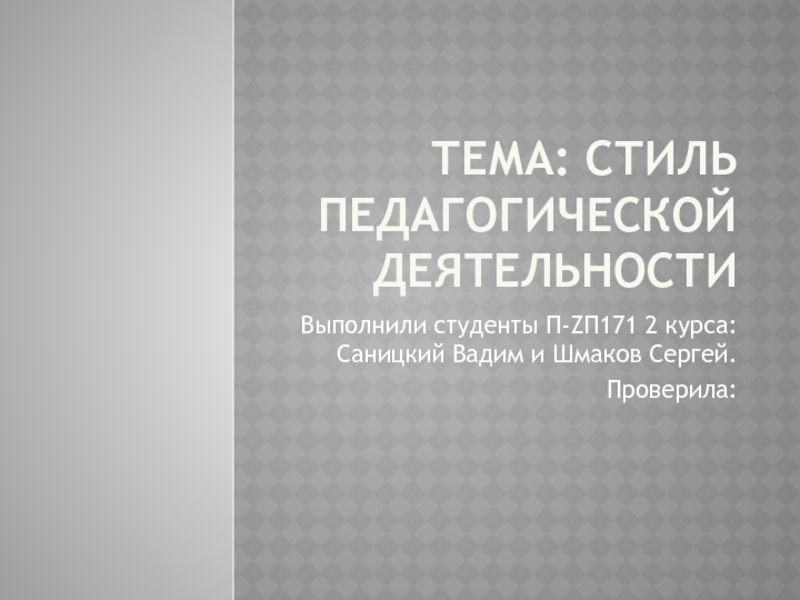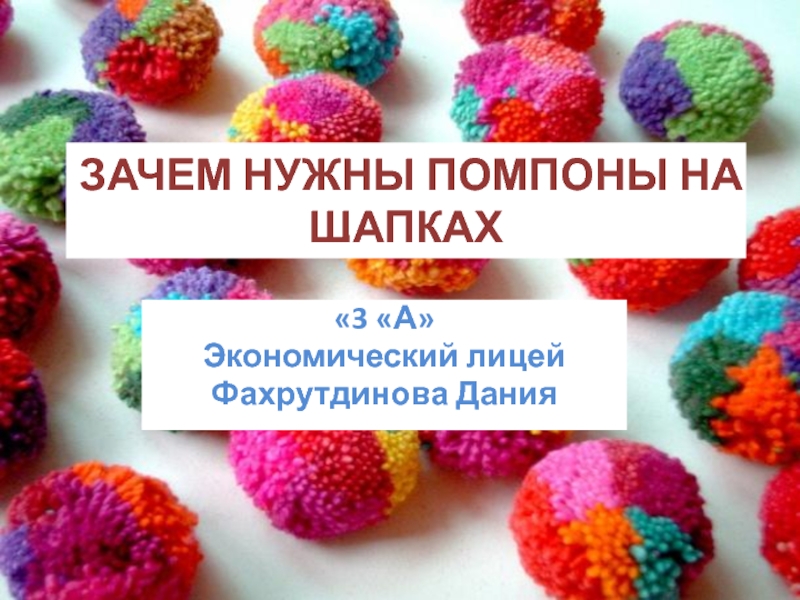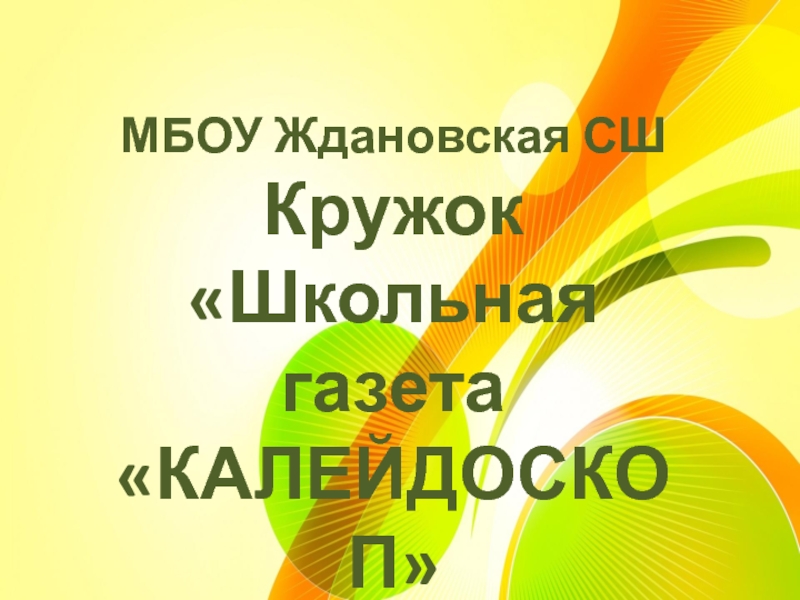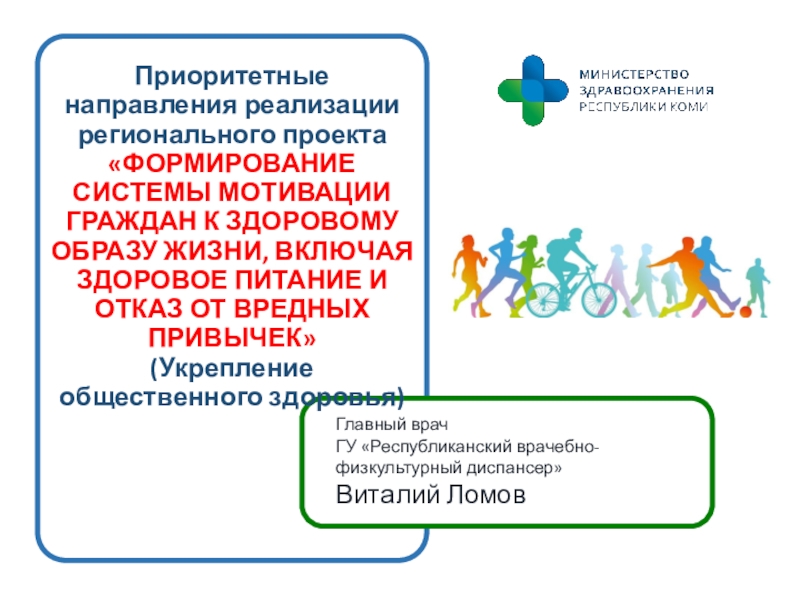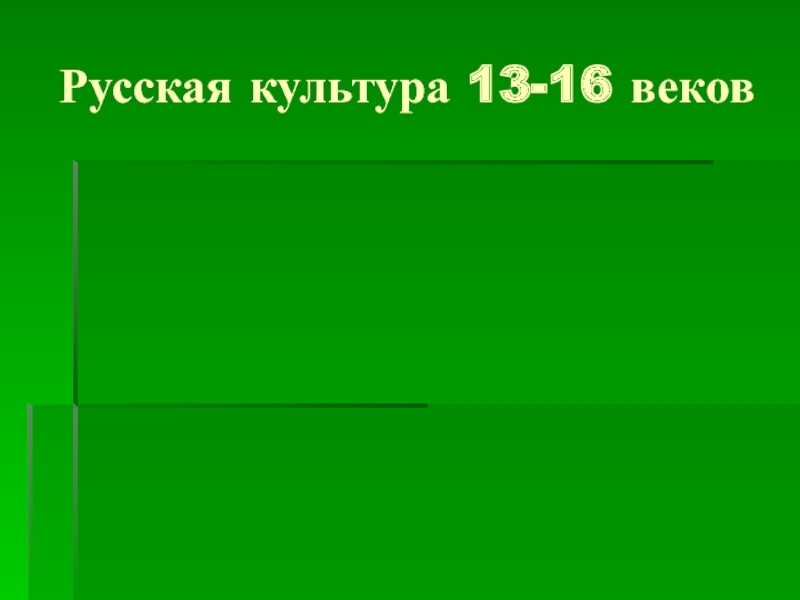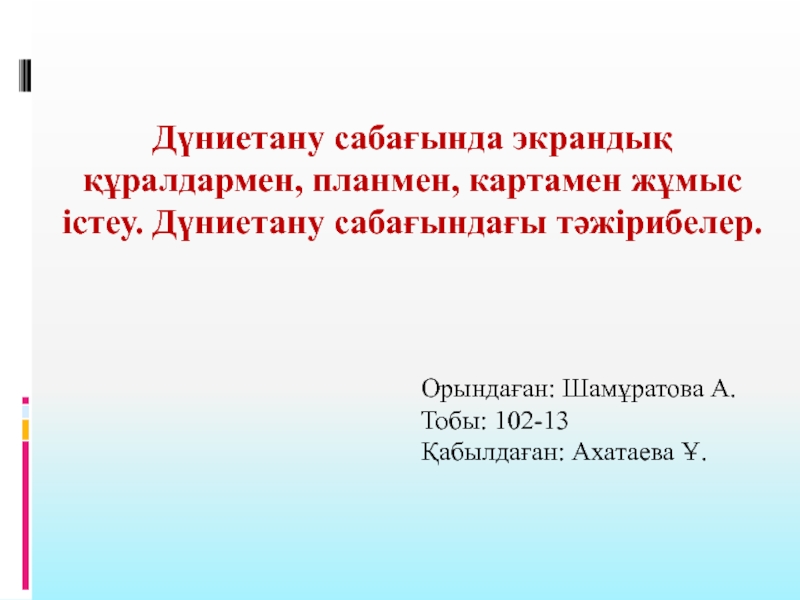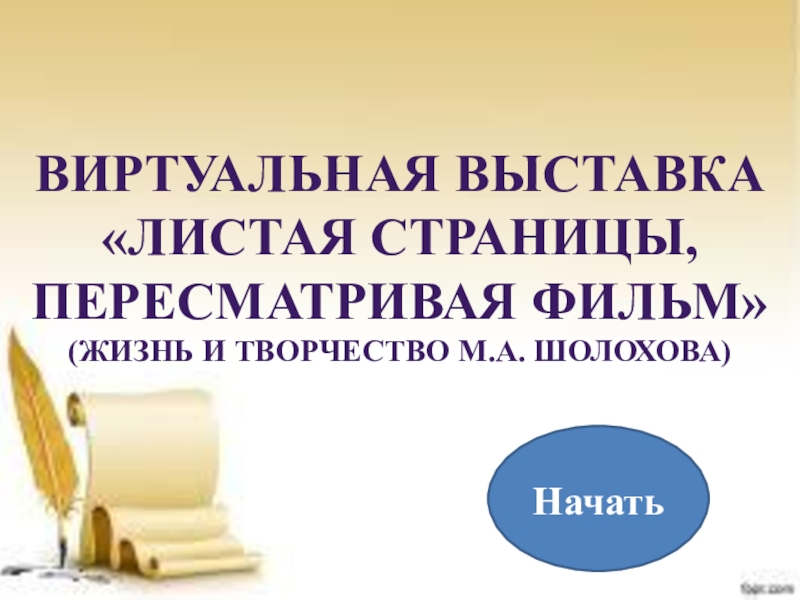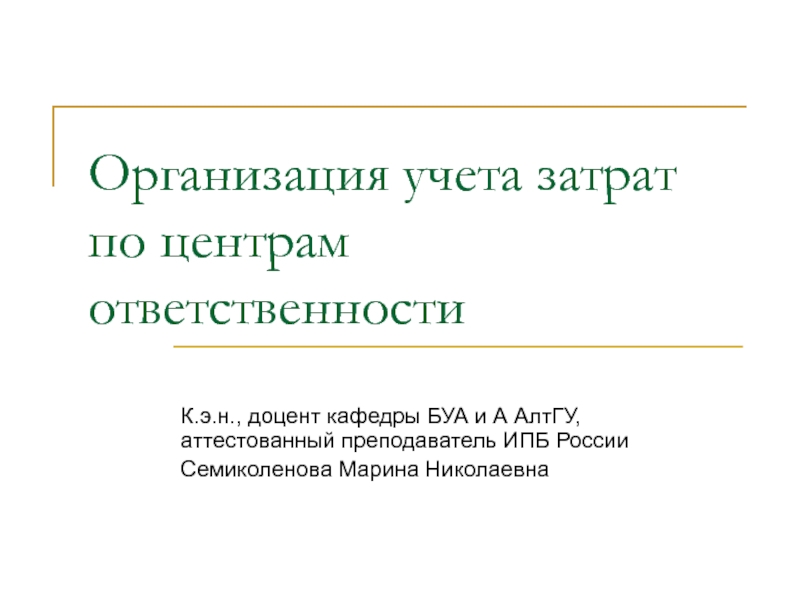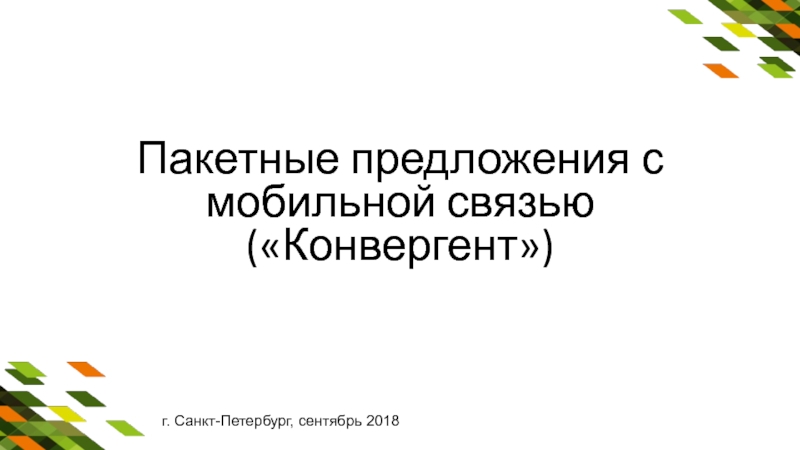Слайд 1Lecture 7:
Membrane Transport
Essential
Cell Biology
Fourth Edition
Chapter 12
Слайд 2Membrane Transport
SIMPLE DIFFUSSION – Small hydrophobic molecules
Can pass right through
the bilayer (eg. OXYGEN, CO2)
2. PASSIVE (FACILITATED) TRANSPORT – Substances
Carried via a protein, molecule by Molecule. The
TRANSPORT PROTEIN must have a binding site for the
specific molecule transported.
3. ION FLOW THROUGH CHANNELS – ION CHANNELS are
Membrane proteins that can open and close. When
Open they act like a tunnel that can let through
A stream (thousands) of ions.
4. ACTIVE TRANSPORT – Membrane proteins called
PUMPS move molecules against a concentration
Gradient; a source of chemical energy is required (ATP).
Слайд 3Cartoons of How the Different Forms of
Membrane Transport Work
Let’s look
at each in more detail…
Слайд 4What substances
Can get through
The membrane
Bilayer by
PASSIVE
DIFUSSION?
Why is the
Membrane permeable
To
some things
And not to
others?
SIMPLE
DIFFUSION
Слайд 5OSMOSIS: PASSIVE DIFFUSION OF
WATER THROUGH CELL MEMBRANES
If a cell
is put in pure water, water flows down
Its concentration into
the cell, bursting it. Such
Bursting implies a membrane that allows water
To diffuse but not intracellular materials (until it
Breaks).
How
Do we
Prevent
This
Disaster
In our
body?
Слайд 6FACILITATED DIFFUSION By either carrier proteins
or channel proteins is specific
– only specific
molecules are transported by a given transport
protein. The
protein has a binding site for
the molecule transported much like an enzyme
has a binding site for substrate.
FACILITATED DIFFUSION
Слайд 7CARRIER
PROTEINS
Must undergo a
shape
(conformation)
change as
It moves the
solute through
the membrane
Carrier
proteins
can move either
ONE OR TWO
specific molecules
at a time
Слайд 8 Intestinal Epithelial Cells Use a Sym-port
Transporter to Absorb
Glucose From the Gut
Слайд 9Ion Gradient Represent a Source of Stored
Potential Energy That Can
Be Used in Many Ways
One use is to power facilitated
diffusion. Take
Glucose absorption from the gut:
Can you describe how this transporter is able
To move glucose into the body even against a
Concentration gradient?
Слайд 10 Intestinal Epithelial Cells Use a Sym-port
Transporter to Absorb
Glucose From the Gut
Слайд 11ACTIVE TRANSPORT BY PUMPS:
Concentration Gradient Are Created by Protein
Pumps.
The most famous is the sodium-potassium
Pump found at the
plasma membrane. Here is how it works.
As a result of using ATP (chemical) energy, sodium
and potassium gradients are formed.
Слайд 12ION CHANNEL
PROTEINS Let
through a stream of
ions when they are
open.
Only specific
ions are let through
the “SPECIFICITY
FILTER.” Channels also
close
to stop the flow of
ions; their opening
and closing can
be controlled
by voltage,
chemicals or
mechanical forces
Слайд 13Current
Flows when
Ions move
Through
Channels –
This can be
measured
One can also
Measure
Voltages
Across
Membranes
Created by
Ions flowing
Through
channels
Слайд 14Ions Will Go Through Open Channels
Only If There is a
Driving Force! Two possible
Forces are diffusion (conc. gradient) or a
Voltage across the membrane
Слайд 15The “Resting Membrane Potential”
All cells have a “resting”
Potential (voltage) accross
Their
plasma membrane. First,
there are sodium and potassium
ion chemical
gradients across
the membrane (WHY?). Thus,
when the Na+ and K+ channels are
open, sodium and potassium
flow in opposite directions (why?)
Cells always have more open
K+ channels at rest, thus
Potassium ion flow is most
important in “resting” cells.
But K+ ion flow creates a mismatch of charge resulting in a
voltage. The voltage continues to increase until K+ flow out is
countered by just enough voltage. This “just enough voltage”
is the “resting membrane potential!
Слайд 16The “Resting Membrane Potential”
All cells have a “resting”
Potential (voltage) accross
Their
plasma membrane. First,
there are sodium and potassium
ion chemical
gradients across
the membrane (WHY?). Thus,
when the Na+ and K+ channels are
open, sodium and potassium
flow in opposite directions (WHY?)
Cells always have more open
K+ channels at rest, thus
Potassium ion flow is most
important in “resting” cells.
But K+ ion flow creates a mismatch of charge resulting in a
voltage. The voltage continues to increase until K+ flow out is
countered by just enough voltage. This “just enough voltage”
is the “resting membrane potential!
Слайд 17Here is the same explanation in slightly
Different words:
Most “resting”
cells have many more potassium
Channels open than sodium channels.
Potassium
ions flow down their gradient until
An electrochemical EQUILIBRIUM is reached.
At equilibrium, flow of potassium out and flow
In become equal so they are balanced –
A STEADY STATE.
But this balance will not occur until potassium
Ion flow has moved a little bit of charge across
The membrane to set up a voltage difference
Capable of providing a force that balances
Diffusion. This voltage across the membrane
Can be measured! (How do you think this is done?)
Слайд 18THE ACTION POTENTIAL IN MUSCLE AND NERVE
If a new set
of channels open this will change the “resting”
membrane potential! This
is exactly what happens during an ACTION POTENTIAL in a nerve axon.
A new set of sodium channels open (“activation”) and after
a few milliseconds they close (“inactivation”). Sodium will
Flow into the cell and this will change the membrane
potential temporarily. Why?
This temporary change reduces the membrane potential
from -80 mV past 0 to +40 mV. This temporary
“depolarization” is called the ACTION POTENTIAL.
The Action Potential is temporary because as soon as the
Na+ channels close, K+ channels open: what happens then?
Слайд 19The Sequence of Changes in Voltage-Dependent
Sodium Channels During the Acton
Potential
State of K+
open closed
channels
Слайд 20The Action Potential Propagates Along the
Nerve Axon
Voltage-dependent Na+ channels ahead
of the
action potential detect the voltage change at a
distance and begin to open, thus producing an
Even greater
Voltage change.
This cycle
repeats itself
over and over
and the action
potential
moves as a
result.
Слайд 21When an action potential reaches a nerve terminal
The membrane potential
change triggers a release
Of neurotransmitter by fusion of vesicles with
The
plasma membrane.
Слайд 22Neurotransmitter
Receptors can be
“ligand-gated”
Ion channels.
When the transmitter
Binds, the channel
Opens
and ion flow
Creates a potential change in the next cell.
